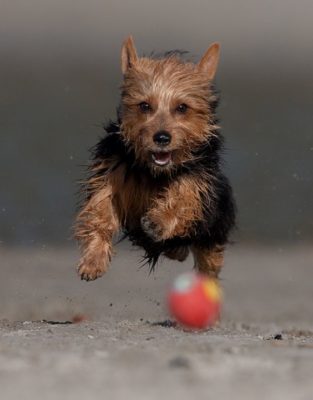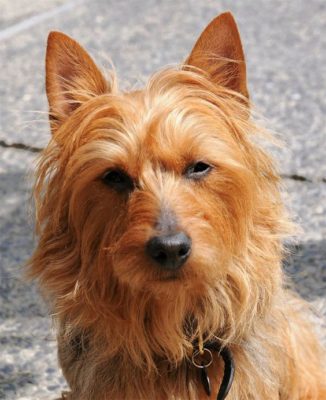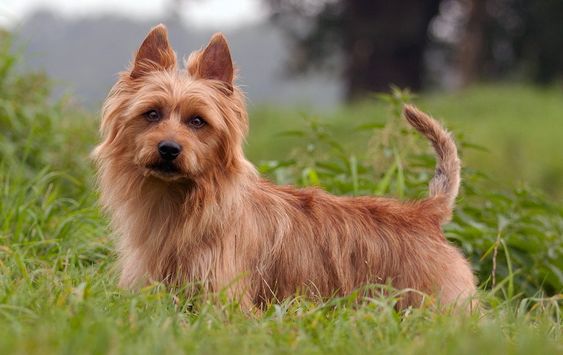Australian Terrier
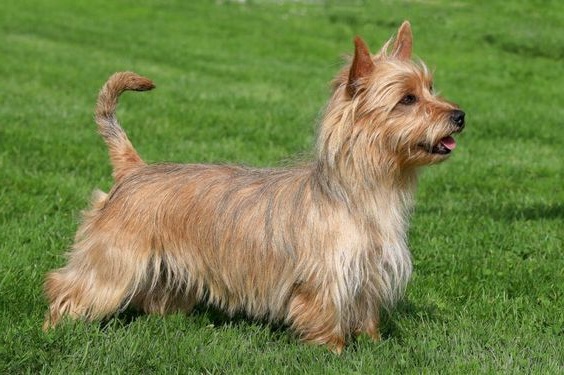
The Australian Terrier is a very active, energetic dog who is always ready for any fun. It does not matter what to do; there must always be an owner near them. After all, these dogs become very quickly attached and accustomed to the family. It is important to teach your proper dog behavior with other animals from an early age. After all, they are not very friendly with pets who live in the same territory.
Table of Contents
Breed Information
| Another Name | – |
| Origin | Australia |
| Height | 23-28 cm |
| Weight | Males 7-8 kg Females 6-7 kg |
| Fur | Medium |
| Color | Sandy, red, and blue with scorch marks |
| Lifespan | 12-15 years |
| FCI Classification | Terriers |
| Group | Dogs for kids, dogs for apartments, guard dogs |
| Price | $500-1300 |
Breed Photos
Origin History
The breed was born in the 19th century in Australia. The ancestors of the Australian Terrier are the Yorkshire Terrier and the Cairn Terrier. Initially, the species had only hunting qualities and was used for catching rats and hunting snakes.
The development of the Australian Terrier at home was parallel to the development of another terrier, the Silky Terrier, but the latter was used only for companion purposes. Around 1820, the breed began to gain significant popularity among the Australian population. At that time, they were called terriers.
The Australian Terrier was officially recognized in 1850. About 50 years later, the dog participated for the first time in a show in Great Britain, where it aroused interest among breeders from all over the world. Now the breed is recognized and popular in many countries and is used not only as a working dog but also as a family friend.
Appearance
Dogs are miniature, but at the time, quite strong. Have a robust and harmonious build. The coat does not exceed 6 cm, hard to the touch, and straight. On the muzzle, paws, it is shorter than on the whole body. On the neck is formed mane. Coloration can be blue, sandy, red. The disadvantage is the white markings.
Dogs do not exceed 28 cm in height and usually weigh around 6-8 kg. Dogs can be slightly larger than bitches.
The tail is usually cropped. The nasal lobe is always black. The eyes are small, oval, dark brown. Despite its small size, the dog has excellent athletic qualities.
Character
The Australian Terrier is a very active, energetic dog who is always ready for any fun. It does not matter what to do; there must always be an owner near them. After all, these dogs become very quickly attached and accustomed to the family.
It is important to teach your proper dog behavior with other animals from an early age. After all, they are not very friendly with pets who live in the same territory. Ready to always fight for the attention of their owner and very jealous. Excellent friends with children, especially schoolchildren and teenagers.
The Australian Terrier will be an excellent watchman at home, as he is distrustful of strangers and has a great sense of ownership. Always ready to follow the owner. It can keep you company even when traveling abroad or hiking in the mountains.
Care
The Australian Terrier does well in urban environments if given frequent and active walks outside. It is recommended that at least two hours a day be devoted to walks and sports activities. They have a lot of excess energy, which can be released through ball games, long-distance running, and exercise.
Several times a year, you should trim the coat because it does not shed on its own. It is important to wipe your dog’s paws and coat with a damp towel after walks.
The Australian Terrier’s claws usually sharpen naturally, but they should be gently trimmed if they do not. His eyes, ears, and mouth need special attention. Try to keep them clean at all times.
Training
The most critical point in training is the socialization of the puppy. You need to accustom him to other people from an early age, let them pet him, give him treats. It is also essential to train the dog to behave properly with other animals, especially with cats.
Dogs can show their somewhat stubborn nature during training, so it’s best to combine play and exercise. The Australian Terrier is very inconsistent, and it can be hard to keep his attention on one thing for a long time, so it is not recommended that training lasts more than an hour.
Common Diseases
The Australian Terrier rarely gets sick. It is not typical for them to have genetic diseases. But it is necessary to remember and, in time to vaccinate, to treat the coat against parasites.
It is important not to overfeed your pet. They have a reasonably good appetite and can often ask for more food than they should. If the owner is fooled, it can provoke obesity.
Nutrition
Since it is a hunting dog breed, it is recommended to feed natural food. It is best to choose the right diet together with a doctor. The diet should be balanced and contain sufficient proteins, carbohydrates, fats, vitamins, minerals.
Never give your pet sweets, smoked, fatty, dried meat, cabbage, peas, or bones. Clean drinking water must be available at all times.
 Italian Greyhound
Italian Greyhound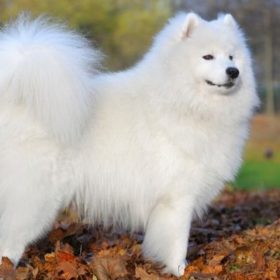 Samoyed
Samoyed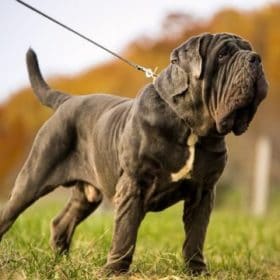 Neapolitan Mastiff
Neapolitan Mastiff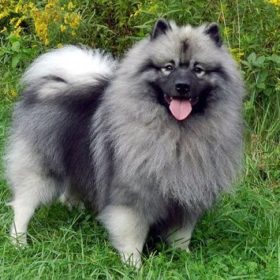 Keeshond
Keeshond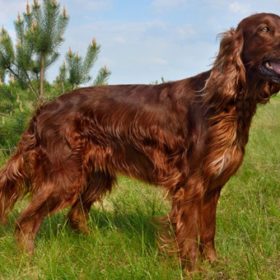 Irish Setter
Irish Setter Nenets Herding Laika
Nenets Herding Laika